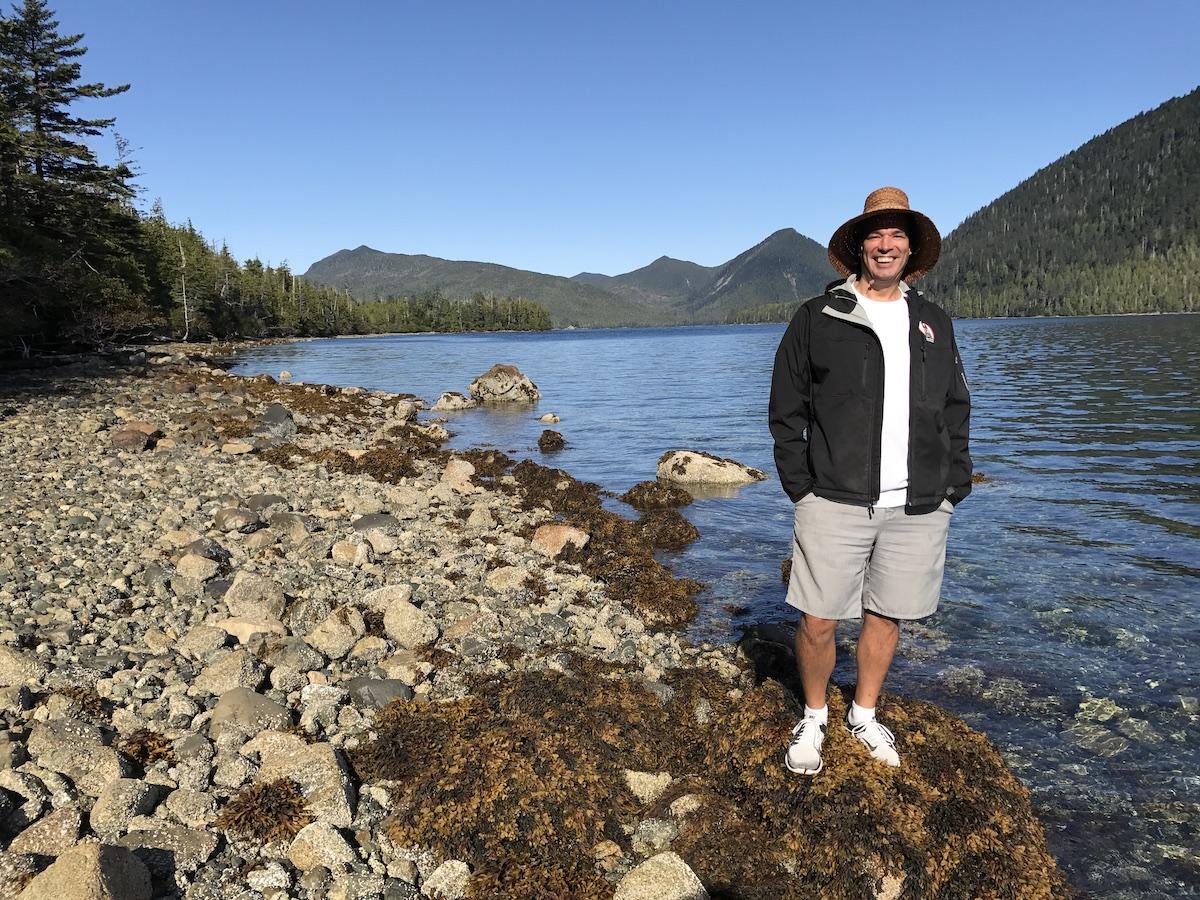
In this 2017 file photo, Haida Watchman David Dixon stands in Gwai Haanas National Park Reserve/Jennifer Bain
Canada has announced a new policy to help it reach its goal of creating 10 new national marine conservation areas.
Parks Canada is working to expand the network of NMCAs beyond the five it now has, which include Gwaii Haanas National Park Reserve, National Marine Conservation Area Reserve, and Haida Heritage Site. There are active proposals for seven in Quebec’s Magdalen Islands, British Columbia’s Southern Strait of Georgia and Central Coast, Labrador’s northern coast, and along James and Hudson Bays. Work continues to confirm at least three more candidate sites.
Steven Guilbeault, Minister of Environment and Climate Change and Minister responsible for Parks Canada, announced the new NMCA Policy Framework last week to kick-off the Fifth International Marine Protected Areas Congress (IMPAC5) in Vancouver.
“Canada’s coastline is as long as six trips around the earth. Marine waters in Canada are vast, home to countless species and relied upon by thousands of coastal communities to work, live and play,” the government said in a news release. “With a target of protecting 30 percent of lands and waters by 2030, Canada must take bold action to ensure marine areas are protected.”

A 2017 floatplane trip takes us over Gwaii Haanas National Park Reserve, National Marine Conservation Area Reserve, and Haida Heritage Site/Jennifer Bain
The new framework emphasizes the importance of collaboration and co-management with Indigenous peoples.
Some highlights:
• It articulates eight interconnected, mutually reinforcing management goals for the NMCA program. These management goals uphold Parks Canada’s commitment to reconciliation and working in partnership with Indigenous peoples, while prioritizing the protection of marine ecosystems and biodiversity.
• It highlights and provides direction around NMCAs contributing to the well-being of Indigenous peoples and coastal communities.
• It brings clarity on the management of NMCAs, along with a new zoning framework that is more responsive to both protection and ecologically sustainable use objectives.
• It identifies a suite of management tools for NMCAs, including regulatory tools to be developed under the Canada National Marine Conservation Areas Act.
Public consultation on the scope and content of its regulatory proposal will be launched this spring.
Guided by science, Indigenous Knowledge and local perspectives, Canada is committed to conserving 25 per cent of lands, freshwater and oceans by 2025, and 30 per cent by 2030.

 Support Essential Coverage of Essential Places
Support Essential Coverage of Essential Places



